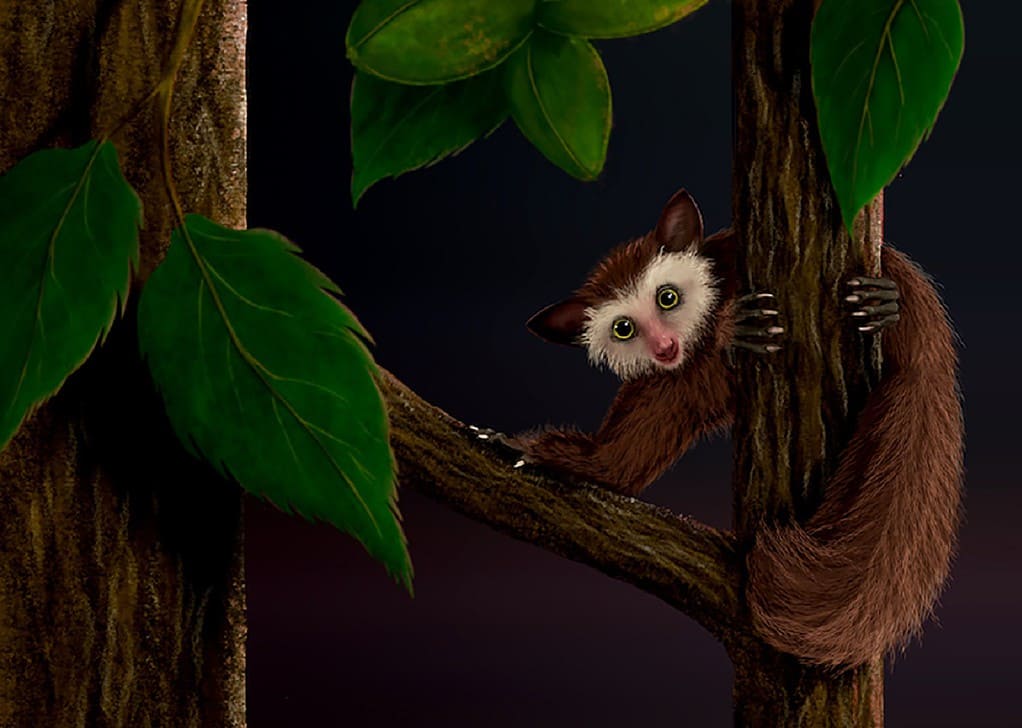
About 30 million years ago, the North American continent was a lush landscape, home to myriad creatures, some familiar and others long forgotten. Among these forgotten beings was a lemur-like primate species, the last of its kind to roam the land before the arrival of humans.
Recent fossil discoveries have opened a window into the life of this enigmatic creature, known as Ekgmowechashala, offering us a glimpse into a world that existed millions of years ago. Scientists learned that Ekgmowechashala (which translates to “little cat man” in Sioux) most likely migrated from China, crossing the Bering land bridge into North America. In doing so, the researchers have solved a long-standing mystery in biology.
A primate immigrant
The story of primates in North America is a tale of evolution, adaptation, and ultimately, extinction. The fossil record indicates that several primate species once thrived across what is now the United States and Canada. According to Dr. John Flynn, a paleontologist and expert on mammalian evolution at the American Museum of Natural History, primates arrived in North America from Africa. It sounds like the most insane and unbelievable journey, but scientists believe that the most plausible explanation is that African primates crossed the vast Atlantic Ocean on vegetation rafts.
The earliest North American primate fossils date from 43 million years ago, recovered in Texas. This was during the Eocene era, a time when the planet was incredibly hot, even by today’s standards when climate change makes headlines every day. There were palm trees in Alaska. Heck, there were rainforests in Antarctica.
In these conditions, monkeys traveling from Africa would have been quite happy with the accommodations they found in North America. But this primate paradise didn’t last long. Eventually, the planet cooled — and it did so quickly. The poles were covered with the still-familiar ice we know today. Rainforests in northern latitudes died. This massive climate change event, known as the Grande Coupure, occurred sometime about 34 million years ago.
The mass extinction hit primates particularly hard, who were too unaccustomed to the sudden winter freezing weather. But this is where the story gets interesting. Scientists found fossils of the Little Cat Man, or Ekgmowechashala, even a few million years after North America’s last primates seemingly died out.
Why did Ekgmowechashala out of all the primates survive the Grande Coupure onslaught? Paleontologists have been left stumped for years. But a new study from the University of Kansas finally solved the riddle: Ekgmowechashala was never there when the mass extinction happened — it only later migrated from China.
The paleontological Lazarus effect
In the 1990s, Chris Beard, a professor at the University of Kansas, collected fossils in China that resembled those of Ekgmowechashala. Now, Beard and colleagues have compared the upper molars of this Chinese lookalike, known as Palaeohodite, with Ekgmowechashala. This analysis revealed a striking similarity between the Chinese and North American fossils — compelling evidence of a close evolutionary relationship.
“When we were working there, we had absolutely no idea that we would find an animal that was closely related to this bizarre primate from North America, but literally as soon as I picked up the jaw and saw it, I thought, ‘Wow, this is it,’” Beard said in a press release.
It follows that North America’s last primate wasn’t some lone survivor, but rather a migrant that crossed into the continent from Asia using the Bering land bridge, now submerged. It’s the same crossing that humans used when the most recent ice age lowered sea levels to populate the Americas about 30,000 years ago.
“Our analysis dispels the idea that Ekgmowechashala is a relic or survivor of earlier primates in North America,” lead author Kathleen Rust said. “Instead, it was an immigrant species that evolved in Asia and migrated to North America during a surprisingly cool period, most likely via Beringia.”
This makes Ekgmowechashala a “Lazarus taxon” — a species that appears in the fossil record long after its relatives have vanished.
“Several million years later [than the other primates], Ekgmowechashala shows up like a drifting gunslinger in a Western movie, only to be a flash in the pan as far as the long trajectory of evolution is concerned,” Beard said.
The researchers point out that Ekgmowechashala’s tale, set against a backdrop of significant environmental and climatic changes, is reminiscent of our current era. The study underscores the importance of understanding how organisms adapt to changing environments, a lesson that resonates with the challenges faced by contemporary species, including humans.
The findings appeared in the Journal of Human Evolution.









